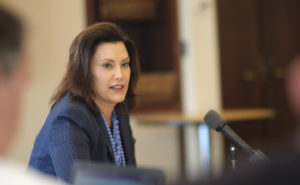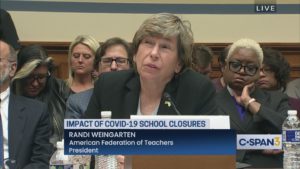Pandemic relief funds finding laborers more than students
(The Center Square) – Recent research is raising the alarm about states spending federal COVID-19 relief funding intended for learning loss on labor, setting the stage for a painful fiscal…

(The Center Square) – Recent research is raising the alarm about states spending federal COVID-19 relief funding intended for learning loss on labor, setting the stage for a painful fiscal cliff.
North Carolina is no exception, with about 55% of pandemic relief spending going to employee salaries and benefits, according to data from the North Carolina Department of Public Instruction.
Georgetown University researchers Katherine Silberstein and Marguerite Roza offered an overview for the spring edition of Education Next on how 14,000 school districts across the country are spending $112 billion in federal Elementary and Secondary School Emergency Relief funding the government sent out in March 2021.
The ESSER funding followed $60 billion from two prior waves of pandemic dollars for schools, with the total pandemic school funding representing roughly three times the typical annual federal investment. Schools have until September 2024 to use the ESSER funds.
Silberstein and Roza found “half of relief funds are paying for labor, setting the stage for a painful fiscal cliff.”
“In the 22 states that provide some detail on what was purchased, it’s clear that labor is the largest item (just under 50%). What we don’t know is how much of that is going to new hires versus pay raises versus stipends, although federal guidance did authorize districts to use these temporary funds to award permanent salary increases,” they wrote. “If history is any guide, districts will struggle to rein in labor expenses as the clock runs out.”
In North Carolina, data from DPI shows the state received a total of $6.2 billion in COVID-19 funds, and districts have spent roughly $4.5 billion as of Feb. 28.
Roughly $1.9 billion of the spending, or about 46%, went to employee salaries. Of that spending, over $1 billion was spent on bonuses, accounting for about a quarter of all spending.
Another 8.5%, or more than $354 million, was spent on employee benefits, DPI data shows.
Education advocates for years have raised concerns about schools spending one-time money on recurring expenses, such as salaries and benefits, which increases budget demands in future years.
Other questionable spending highlighted by Silberstein and Roza includes roughly 20% of funding going to new construction or extensive renovations, despite warnings from the federal government about investing in facilities.
“Assuming districts scoped and timed their facilities projects right so costs don’t stretch after ESSER money runs out, such investments won’t worsen the fiscal cliff,” the researchers wrote. “What facilities aren’t doing, however, is resolving gaps in learning which are at the heart of what most see as the purpose of relief funds.”
More than $384.5 million, or about 9.25% of North Carolina’s school COVID-19 funding, has been spent on capital outlay through the end of February.
Percentages of other spending categories in North Carolina include 10% for purchased services, 22% for supplies and materials, and 3% for “other.”
Federal law requires at least 20% of the COVID-19 funding to be used to address learning loss, with few other restrictions. Education researchers have repeatedly highlighted tutoring as the most effective way of addressing the drastic learning loss during the pandemic.
North Carolina schools, however, have spent a total of $56.6 million, or less than 2% of COVID-19 funding, on tutoring, according to the data.
“There is still much to watch about how districts adjust when ESSER is gone, and how students fare over the long haul,” Silberstein and Roza wrote. “But perhaps most notably, the experiment is a reminder of the critical role district leaders paly in how US education funds are spent and in determining how much value those funds bring to students.”



